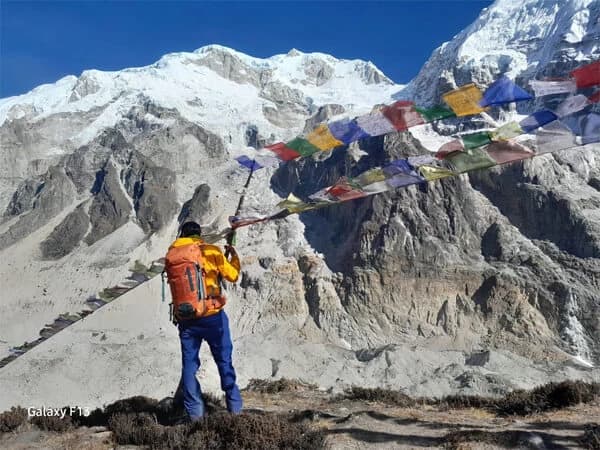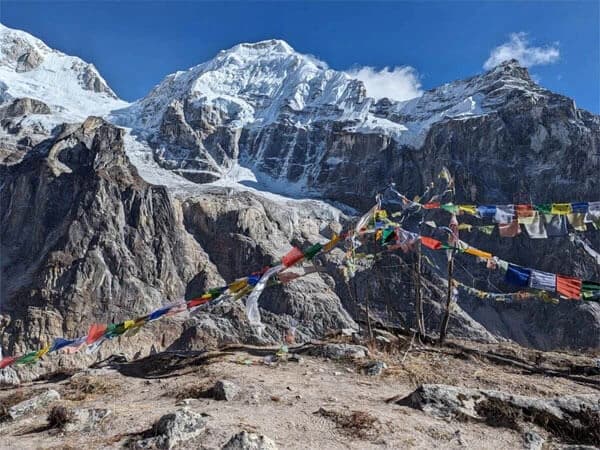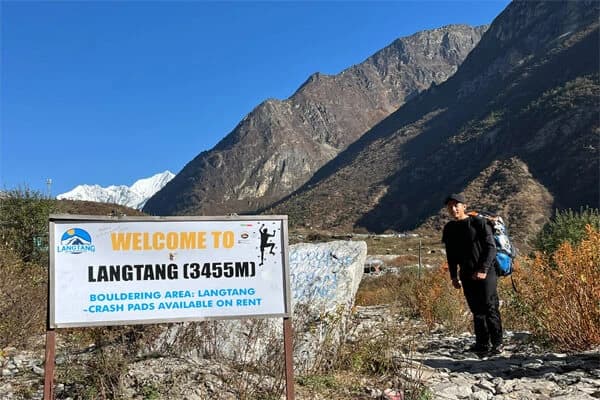Kanchenjunga Base Camp Trek cost is an important consideration for anyone planning this extraordinary adventure in Nepal. The third-highest peak in the world, Kanchenjunga, offers isolated paths, unspoiled scenery, and distinctive cultural encounters, but the price varies based on thetype of trekking you select. Permits, lodging, food, porters, guides, equipment, transportation, and occasionally emergency or insurance coverage are all costs. Other factors that affect the total cost include the season, the length of the walk, and the number of trekkers in your group.
Compared to other well-known Himalayan treks, this one is more isolated and less busy, which can raise expenses but also adds to the experience's uniqueness. In addition to ensuring safety, hiring knowledgeable guides and porters enhances the experience by offering cultural insights and local knowledge. Budgeting is crucial because lodging options range from simple teahouses to more upscale resorts, and food costs can change as you travel. We will examine the Kanchenjunga trek cost breakdown of all the major elements in this blog and offer helpful advice to assist trekkers make the most of their trip.
Factors Affecting the Kanchenjunga Base Camp Trek Price
Knowing the elements that influence a trek's cost is crucial while organizing a trek in Nepal. Due to the remote and difficult nature of the Kanchenjunga Base Camp Trek, costs can vary depending on a number of important factors. You may improve your budget and prevent surprises by being aware of these things.
Duration and Distance of the Kanchenjunga Trek
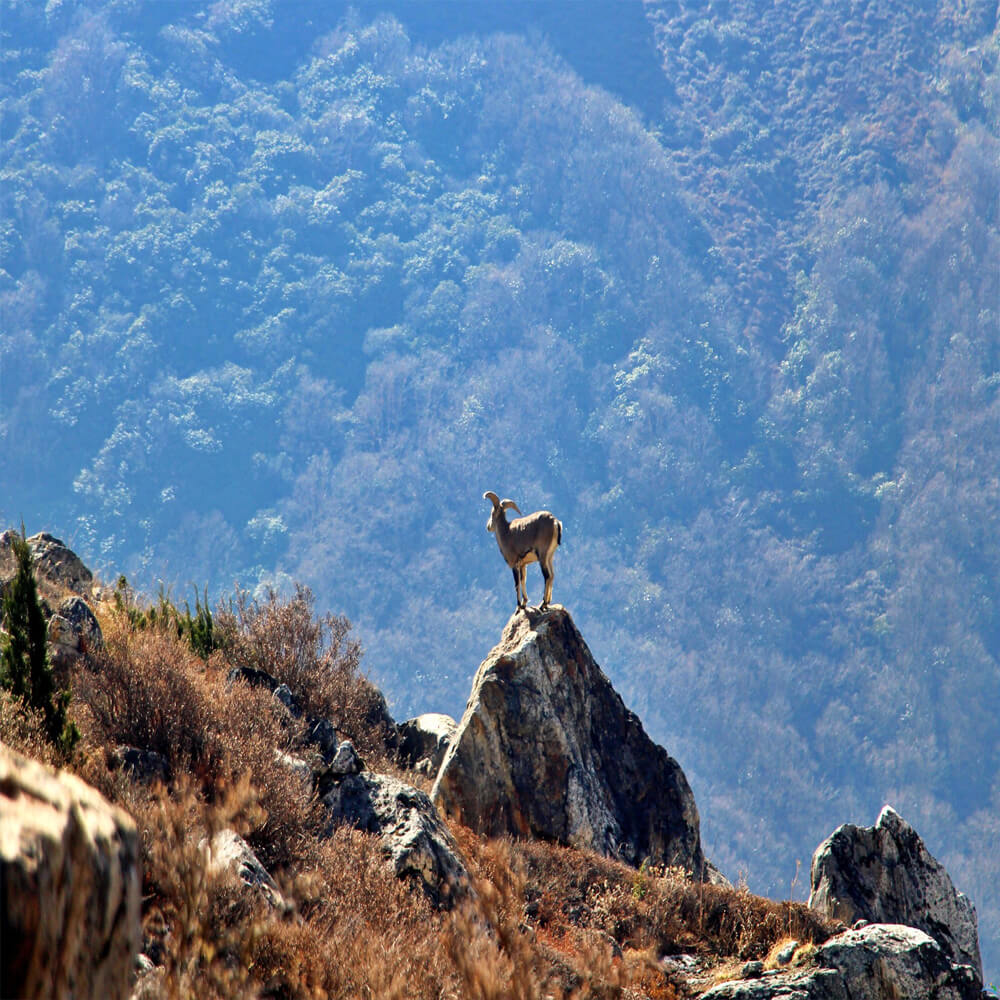
One of the main determinants of cost is the trek's length. Depending on the route and pace, the Kanchenjunga Base Camp Trek typically takes 18 to 25 days. Higher guide or porter expenses, more meals, and more nights spent in teahouses or camps are all associated with longer treks. Shorter itineraries can save money, but they might necessitate walking more quickly, which can be exhausting and raise the risk of altitude sickness. Choosing the ideal length of time for trekking in Nepal requires balancing comfort, safety, and cost.
Number of Trekkers and Group Size
The total fee varies depending on whether you are traveling alone, with buddies, or in a small group. By splitting the cost of guides, porters, and even helicopter transfers, trekking in a larger group can save money. Private guides or services may cost extra for lone trekkers. Joining a group for trekking in Nepal is frequently a cost-effective option to save money while still getting professional advice and safety in isolated locations.
Season and Weather Conditions
Trekking season has a big influence on the price. Clear skies and stunning mountain views are available during peak seasons like spring (March–May) and fall (September–November), although airfare, guides, and lodging costs are greater during these times. Although they are less expensive, off-peak seasons like the winter or monsoon include drawbacks like snow, rain, or closed trails. Understanding seasonal pricing fluctuations while making trekking plans in Nepal aids in determining if cost or ideal trekking conditions should come first.
Type of Trek: Guided, Private, or Independent
The trekking technique has an impact on the budget as well. Although it is more expensive, hiring a guide or porter guarantees convenience, safety, and local expertise. Although private treks are more costly than group treks, they provide greater luxury and freedom. Although independent trekking saves money, it necessitates careful preparation, experience, and planning. The best kind of trek for anyone interested in trekking in Nepal will depend on their level of comfort, expertise, and ability to handle logistics on their own.
Remote Location and Accessibility
One of Nepal's least frequented areas is Kanchenjunga. Because of its remote location, materials, permits, and transportation expenses are higher. The logistics are more complicated than on more well-traveled routes like the Annapurna or Everest, which raises the overall cost. Treks to isolated areas like Kanchenjunga necessitate careful budgeting for trekking in Nepal in order to account for additional travel time, local transportation, and emergency situations.
Personal Preferences and Comfort
Lastly, individual decisions like the kind of lodging, food, and equipment have an impact on expenses. While some trekkers opt for more luxurious lodgings or fully supported campsites, others prefer simple teahouses and regional cuisine, which raises the cost. It is crucial to balance cost and comfort while organizing a trekking trip in Nepal based on your requirements and financial constraints.
You may create a reasonable budget for the Kanchenjunga Base Camp Trek by enjoyingto account the following variables: length of time, number of participants, time of year, type of trek, remoteness, and individual preferences. Being ready guarantees a memorable, cozy, and safe trekking in Nepal experience.
Kanchenjunga Base Camp Trek Permit Fees
Getting the appropriate permits is crucial because the Kanchenjunga Base Camp walk passes through a protected and restricted region. These fees contribute to the preservation of the area's natural beauty and cultural legacy and make up a sizeable portion of the Kanchenjunga trek budget and expenses. Comprehending the necessary licenses guarantees a seamless trekking experience and adherence to regional laws.
Kanchenjunga Conservation Area Permit (KCAP)
Every trekker needs to get a Kanchenjunga Conservation Area Permit (KCAP) in order to visit the Kanchenjunga region. The local conservation office issues this permission, which contributes to funding conservation initiatives in this isolated Himalayan region. It is required that you carry the permit with you during the entire trek. Foreign visitors are subject to extra fees, which vary based on nationality. Trekking organizations and guides frequently help obtaining this permission, which streamlines the procedure.
Trekker’s Information Management System (TIMS) Card
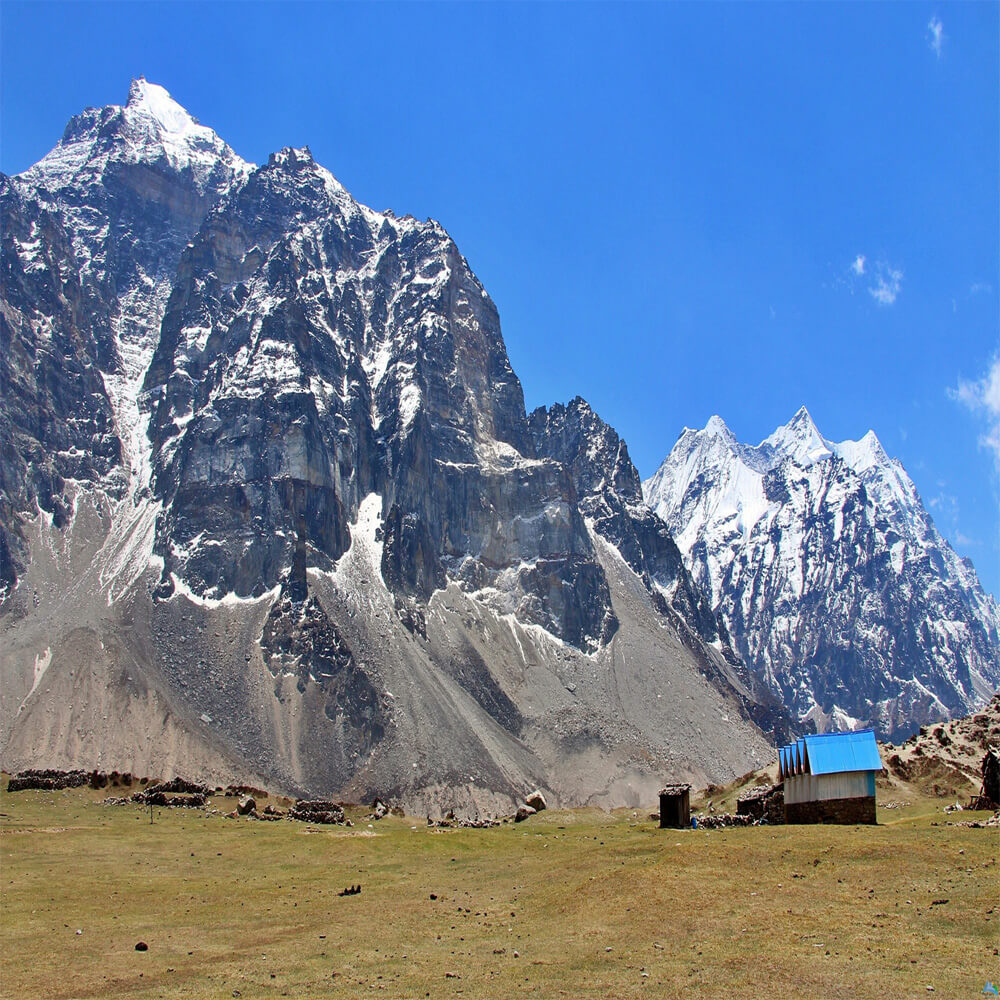
The Nepal Tourism Board or the Trekking Agencies' Association of Nepal issues TIMS cards, which are required for all trekkers in addition to the KCAP. For safety reasons, the TIMS card keeps track of trekkers and offers emergency assistance when required. Fees for solo and group trekkers vary, just as the KCAP.
Local and Camping Fees
Some isolated communities may impose tiny local fees when trekking in order to fund community development. There may be extra camping costs if you decide to tent in specific locations rather than staying in teahouses. Although these expenses are typically negligible, they are essential to preserving the delicate environment.
Restricted Region Trek Considerations
The Kanchenjunga region's exceptional biodiversity and delicate ecosystem have earned it a restricted area designation. In addition to permissions, trekking here entails rigorous adherence to regulations, such as staying on authorized paths, not littering, and obeying local authorities' instructions. Since it is illegal to enter without permission, trekkers should make plans in advance and make sure all permits are in order before beginning the trip.
In addition to ensuring safety and legality, obtaining the required permits before to starting the trek helps to preserve this magnificent Himalayan area. Never forget to include these official fees in your Kanchenjunga trekking cost in Nepal.
Kanchenjunga trek daily expenses on Transportation
When organizing the Kanchenjunga Base Camp Trek, transportation is a crucial component. Trekkers can improve their budgeting and facilitate a more seamless trip by being aware of the expenses and available options in advance.
Flights to Nepal
The majority of trekkers fly internationally to Kathmandu to start their adventure. The airline, the time of year, and the amount of advance booking determine the cost of the ticket. To receive the best deals, travelers should think about making their reservations in advance. To go to the start of the journey, one must take domestic flights from Kathmandu to eastern Nepal, typically to Biratnagar, Bhadrapur, or Taplejung. It is crucial to factor in extra days for flexibility because weather might have an impact on these flights.
Local Transportation to Trailheads
Trekkers require local transportation to the trailhead once they arrive in eastern Nepal. Local buses, shared taxis, and private jeeps are available options. While buses are less expensive but slower and less dependable, private jeeps are more comfortable and faster. The distance, time of year, and vehicle type all affect the price. Some trekking packages cover this local transportation as part of the total price, which can help with budgeting.
Helicopter Transfers (Optional)
Helicopter transfers are an alternative for people who are pressed for time or who want additional convenience. At the completion of the walk, trekkers can take a helicopter back from Kanchenjunga Base Camp or even to specific locations close to the trailhead. Helicopter transfers are far more costly and need prior planning, despite being quicker and more comfortable. They also need the right permits and coordination with local operators.
Planning Transportation Costs
It is crucial to account for all transportation expenses, such as flights, local transfers, and optional helicopter services, while planning a budget for Kanchenjunga Base Camp. Carefully combining various modes of transportation can help control costs without sacrificing comfort or safety.
Planning a trip becomes easier when you use Nepal Trekking Routes services. Trekkers can concentrate on enjoying the mountains and villages along the way because we take care of flights, local transportation, and even permits. Transportation may seamlessly integrate into an enjoyable and safe Kanchenjunga trekking experience with good planning.
Accommodation and Food
Two of the biggest costs you will face when organizing the Kanchenjunga Base Camp Trek are lodging and meals. You can make sensible financial decisions and have a comfortable travel if you know what to anticipate.
Teahouse Accommodation
On the Kanchenjunga Base Camp Trekking, the majority of trekkers rest in teahouses along the way. Teahouses are straightforward lodges that provide rudimentary accommodations with blankets, beds, and occasionally communal restrooms. Season, altitude, and location all affect prices. Higher-altitude stops close to the base camp may cost more because of restricted supplies, but lodgings in lower communities are more reasonably priced. Trekkers who want a lighter load without bringing camping equipment will find that staying at teahouses is both convenient and safe.
Camping Options
Some trekkers decide to tent, especially in isolated locations with few teahouses. More location flexibility is possible when camping, but you must bring your own tent, sleeping bag, and cooking supplies. Although this can result in a more immersed experience in nature, it also adds to the costs and physical strain. An extra expense to enjoyto account while figuring out the Kanchenjunga Base Camp Trekking cost is renting or purchasing camping equipment.
Food Expenses
The trail serves local Nepali foods like soups, noodles, and dal bhat. A dinner in a lower village might cost about $3 to $5, but at higher camps, it might cost $8 to $12. Prices rise with altitude. There is usually breakfast, lunch, and dinner served, but drinks and snacks are extra. Organizing your meals and keeping dry snacks or energy bars on hand will help you keep expenses under control.
Tips to Manage Costs
During high season, try to reserve teahouses in advance, share accommodations if you can, and opt for local cuisine rather than imported products to keep your food and lodging expenses under control. In distant areas, combining teahouse stays with sporadic camping might strike a balance between cost and comfort.
Overall, lodging and food are crucial components of your trekking budget. You may have a safe, comfortable, and cost-effective Kanchenjunga Base Camp Trek if you plan ahead and know what to expect.
Kanchenjunga trek guide and porter cost
In isolated areas like Kanchenjunga, hiring porters and guides is crucial to organizing a fun and safe journey. In addition to assisting with permits and navigating challenging routes, knowledgeable local guides also offer cultural insights and guarantee your safety in an emergency. By carrying your bulky bags, porters ease the journey and free up your time to enjoy the landscape. Effective budgeting for your climb to Kanchenjunga Base Camp requires an understanding of the associated expenses.
Cost of Kanchenjunga trek with guide
The average daily salary for a professional trekking guide is between $25 and $40, depending on expertise and language proficiency. Daily route planning, lodging management, and community relations are frequently the responsibilities of guides. They also keep an eye on your health, offer acclimation guidance, and offer crucial support during altitude fluctuations. Anyone doing high-altitude treks in Nepal or trekking for the first time is strongly encouraged to hire a guide. Cost of Kanchenjunga trek with guide is included in the trekking package cost offered by our company, Nepal Trekking Routes.
Porter Costs
Porters usually make $15 to $25 a day, which includes tips and lunches. A porter can move you more quickly and with much less fatigue because they can carry up to 20 to 25 kilograms of your equipment. It is very helpful to hire a porter for lengthy or steep path portions. Porters not only transport your bags but also help you set up tents or take care of your teahouse accommodations.
Tips and Gratuity
At the conclusion of the journey, it is traditional to tip porters and guides, typically between 10% and 15% of their entire pay. This supports local livelihoods and expresses gratitude for their efforts. Tipping appropriately guarantees ongoing professionalism and inspires the personnel for upcoming treks.
Group Trekking Advantage
Group trekking allows for the sharing of guide and porter expenses, which lowers the cost of the journey. For example, trekking operators frequently join trekkers together for other well-traveled routes, like the Upper Mustang Trek, where group logistics can lower individual costs while preserving excellent support.
On the Kanchenjunga trip, hiring porters and guides improves ease, safety, and enjoyment. Planning for these costs in advance ensures a smoother, stress-free experience in one of Nepal’s most remote and breathtaking regions.
Equipment and Gear for the Trek
Any high-altitude journey, including the Kanchenjunga Base Camp journey, requires the right gear. Having the proper equipment guarantees safety, comfort, and a more pleasurable experience because trekking in the Himalayas entails cold temperatures, abrupt weather changes, and lengthy walking days. The gear for the Kanchenjunga Trek is special to its distinct track and climate, even if the Upper Dolpo Trek has similar high-altitude circumstances.
Essential Clothing
The secret to remaining warm and cozy is layering. To keep perspiration off your skin, start with a base layer that wicks away moisture. For insulation, a warm mid-layer, such as a fleece jacket, is required during chilly mornings and evenings. To guard against rain, snow, and strong winds, the outermost layer should be a jacket that is both waterproof and windproof. On steep and uneven terrain, it is easier to move when wearing trekking pants that are both flexible and warm. Remember to wear gloves, a hat, thermal socks, and a scarf or buff to protect your extremities from cold winds and frostbite. For traction over rocky, slippery terrain and ankle support, sturdy, well-worn trekking boots are essential.
Trekking Equipment
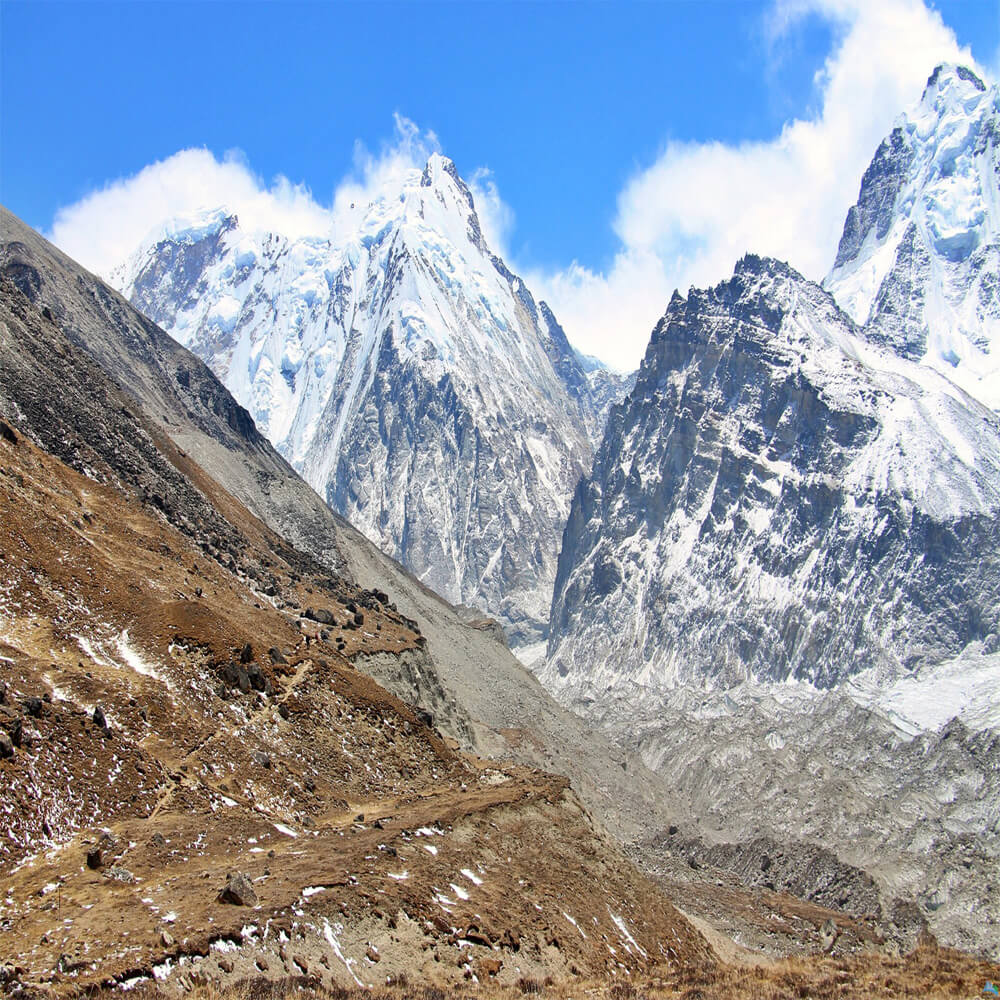
For transporting necessities like water, snacks, and personal belongings, a cozy backpack with adjustable straps and a rain cover is required. Trekking poles offer balance on uneven terrain and lessen knee pain during lengthy descents. For early starts or when trekking in low light, a dependable headlamp is necessary. A first-aid pack, water purification pills, a reusable water bottle, and a sleeping bag suitable for cold temperatures are other helpful supplies. Because of the intense sunshine at high elevations, sunscreen and sunglasses with UV protection are also essential. Trekkers can successfully complete the Kanchenjunga Base Camp Hiking with the proper equipment, making it a once-in-a-lifetime Himalayan experience.
Additional Costs for Kanchenjunga Base Camp Hiking
It is crucial to keep in mind that the overall cost of a trek, such as the Kanchenjunga Base Camp Trek, includes more than just permits, lodging, and guides. Extra costs can mount up, particularly in isolated high-altitude areas. Trekkers can better plan their budget and steer clear of unforeseen expenses by being aware of these charges.
Travel Insurance and Emergency Expenses for Kanchenjunga Base Camp Trek
Travel insurance is among the most significant extra expenses. Risks associated with high-altitude trekking include altitude sickness, injuries, and unexpected illness. If necessary, insurance should cover hospital stays, medical emergencies, and evacuation. Helicopter rescue may be required in some isolated areas, and these expenses might be very significant if you do not have insurance. Given the potential for erratic weather or health problems, even seasoned trekkers should think of this as essential. Having a modest first-aid kit on hand is a good idea because emergency prescriptions or minor treatment expenditures along the path also add to expenses.
Optional Activities and Gear Replacement
Additionally, trekkers might have to pay for extras like local activities, cultural experiences, or sightseeing in the settlements close to the trail. Budget-boosting activities include hiring local guides for quick trips, purchasing trinkets, and paying nominal admission fees to monasteries. Trekking equipment may also require modifications or replacements while traveling. For comfort and security, things like sleeping bags, trekking poles, and worn-out footwear can be crucial.
Even seasoned trekkers who completed the Makalu Base Camp Trek are aware that setting aside money for equipment and little extras guarantees a more stress-free, seamless experience. Planning ahead for these extra expenses makes the trek to Kanchenjunga Base Camp safer, more pleasurable, and less stressful.
Kanchenjunga Base Camp Trek Package Costs
The Kanchenjunga trekking package price varies according on the level of comfort and service you select.
Kanchenjunga Base Camp Trek Budget Package
For trekkers who wish to travel the area on a tight budget, there are packages available. These typically consist of porters, guides, native cuisine, and simple teahouse lodging. Budget trekking packages, which typically cost between $2,000 and $2,500 per person for a 20–25 day itinerary, are appropriate for visitors on a tight budget who are prepared to forgo comfort in favor of a more genuine experience.
Kanchenjunga Base Camp Trek Mid-Range Package
Better lodgings or teahouses, more included meals, knowledgeable guides, and occasionally smaller group sizes are all features of mid-range packages, which provide a higher degree of comfort. The typical price range for these packages is $2,800 to $3,200 per person. They guarantee adequate support and safety during the hike while striking a balance between comfort and cost.
Luxury Kanchenjunga Base Camp Trek Package
Luxury Kanchenjunga Base Camp trekking packages cater to individuals who want the highest level of luxury and convenience. They frequently consist of first-rate lodging, porters, private guides, customized meals, and occasionally helicopter transports. Each individual may have to pay $3,500 or more for a Luxury Kanchenjunga trek package. This is the best choice for those who like to take in the breathtaking Himalayan landscapes in luxury with knowledgeable support all along the way.
Kanchenjunga Base Camp trekking budget tips
A major expedition, trekking to Kanchenjunga Base Camp can be expensive. However, you may cut costs without sacrificing the comfort and enjoyment of the trip if you plan ahead. These helpful hints will help you cut costs when trekking.
Choose Local Tea Houses
One of the simplest methods to cut costs is to stay in neighborhood tea houses rather than upscale lodges. Simple yet quaint, tea houses are far less expensive. You can also savor family-cooked meals and the warmth of the locals.
Travel in a Small Group
It is easier to split expenses like transportation, porters, and guides when you join a small group. Trekking in groups is also more fun because you get to know new people and save money.
Carry Your Own Gear
In Nepal, renting trekking equipment can be more expensive. You can save money by bringing your own sleeping bag, trekking poles, and warm clothing. Rent only what is absolutely required.
Book with a Local Agency
Compared to foreign agencies, making a direct reservation with a local business like Nepal Trekking Routes may be less expensive. Local businesses are well-versed in the area and provide quality services at reasonable costs.
Avoid Unnecessary Extras
Snacks, hot showers, and bottled drinks can rapidly mount up. Bring some Kathmandu snacks and a reusable water bottle filled with purification tablets.
Cost comparison with other treks
There are some noticeable variations in price between the Kanchenjunga Base Camp Trek and other well-known Nepalese treks. Due to its remoteness and lack of development, this route is typically more costly. Long trekking days, flights, and special permits raise the cost.
The Everest Base Camp Trek, for instance, is typically less expensive. The Everest regiontrekking offers a lot of lodges, rivalry among tea houses, and superior facilities, which assist lower daily prices even though flights to Lukla are expensive.
The Annapurna Base Camp Trekand the Annapurna Circuit Trek are also less expensive. They are affordable due to their roads, transportation alternatives, and convenient availability of food and accommodation.
However, treks like as Upper Mustang or Upper Dolpo can cost even more than Kanchenjunga. Higher permit costs and occasionally camping help are necessary in these restricted locations.
The Kanchenjunga Base Camp Trek is therefore in the middle. It is less expensive than Dolpo or Mustang but more expensive than Everest or Annapurna.
Conclusion: Kanchenjunga Base Camp Trek Cost
Kanchenjunga Base Camp Trek is one of the most daring treks in Nepal. Permits, guides, food, and transportation are just a few of the many factors that affect the total cost. Trekkers should typically set aside between USD 2,000 and USD 3,500 for the Kanchenjunga Base Camp trek price 2025/026. This covers daily costs, local and international airfare, and trekking assistance. Although it increases the expense, hiring a certified guide and porter makes the trip safer and simpler. Compared to other well-traveled trekking routes, food and accommodation costs are higher in remote locations.
Additionally, trekkers should budget a little extra cash for emergencies, tips, and personal needs. The experience of traveling through unspoiled landscapes, isolated towns, and standing at the foot of the third-highest mountain in the world is invaluable, despite the seemingly hefty expense. Planning ahead makes the walk a once-in-a-lifetime experience while guaranteeing comfort and safety.
Frequently Asked Question
How much does Kanchenjunga trek cost?
The Kanchenjunga Base Camp trek cost from Kathmandu usually ranges between USD 2,000 to 3,500 per person. The price depends on the trekking package, services included, and group size.
What permits are required and how much do they cost?
You need a Restricted Area Permit, Kanchenjunga Conservation Area Permit, and TIMS card. Together, these can cost around USD 100–150 per person.
What is included in the trek package cost?
Most trekking packages include permits, guide and porter wages, meals, tea house accommodation, transport, and agency service charges.
What is not included in the cost?
The Kanchenjunga trekking tour cost usually excludes international flights, travel insurance, tips, personal expenses, extra drinks, and gear rentals.
How can I reduce the cost of the trek?
You can save money by joining a group trek, booking through a local agency, or carrying your own gear to avoid rentals.





